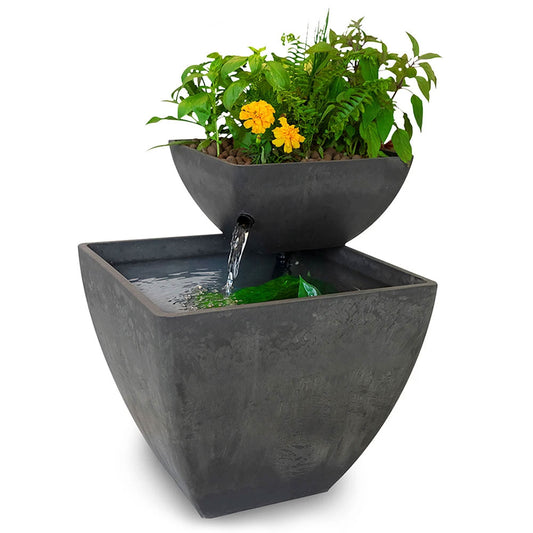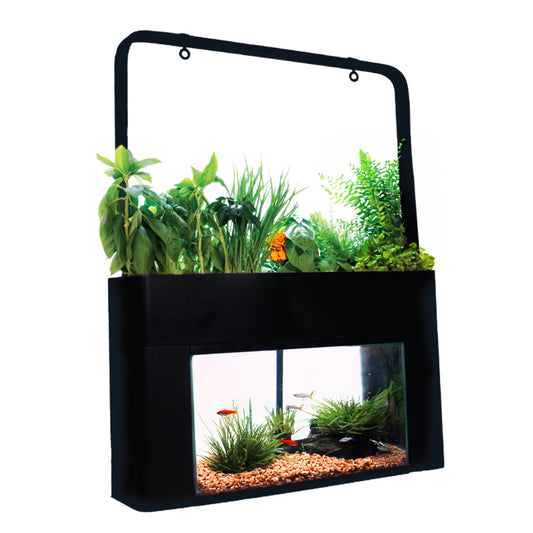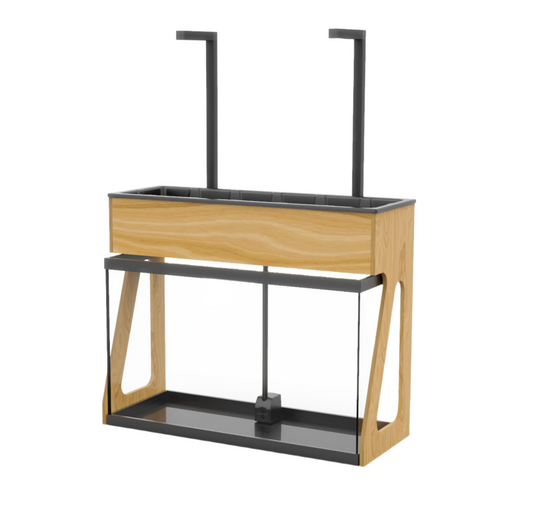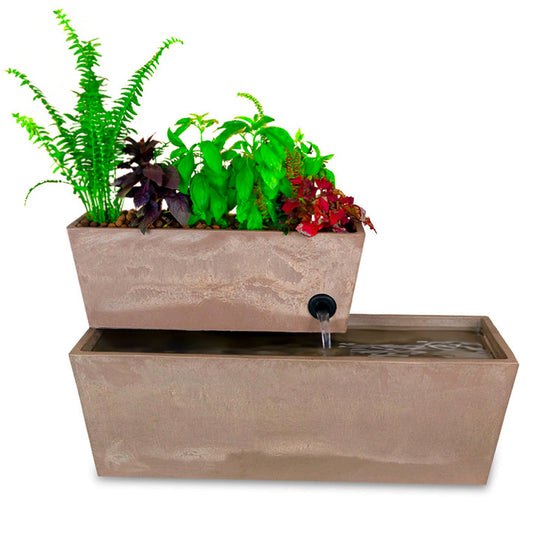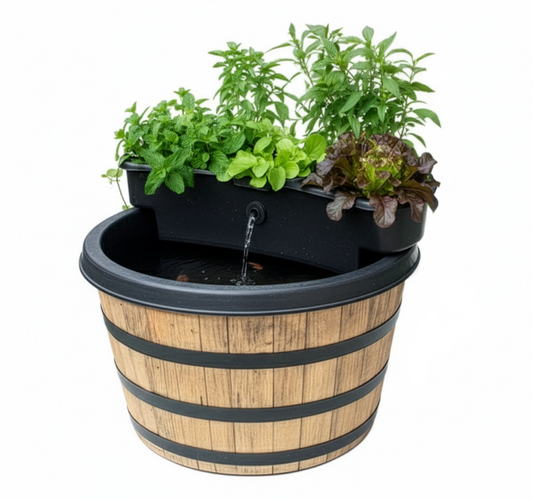The Underestimated Undergravel Filter: Underrated or Underpowered?
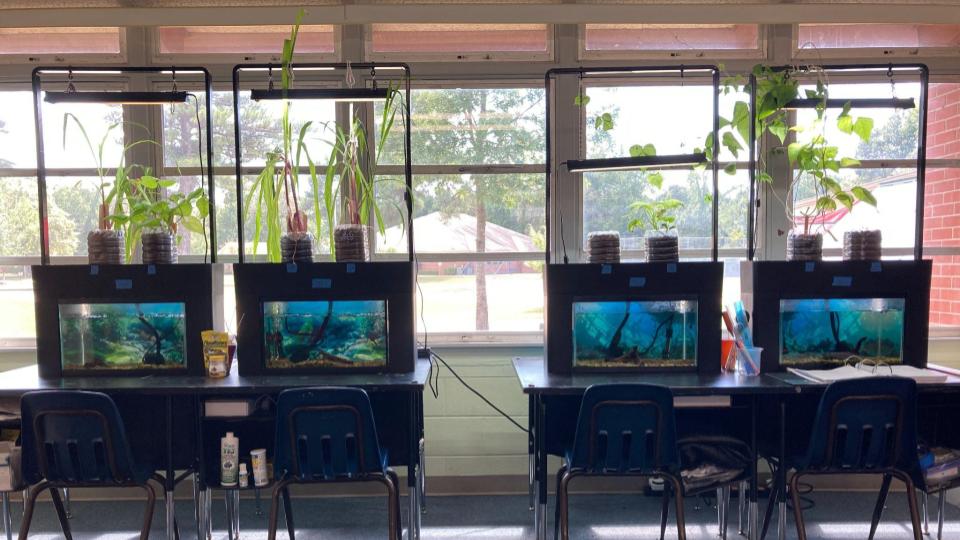
In the aquarium trade, undergravel filters are an odd holdover. Powered by noisy but nearly indestructible air pumps, they were once ubiquitous. Before the market came to be dominated by small, quiet magnetic drive pumps, it was rare to see an aquarium without the familiar plastic riser tubes. The “UGF” is now generally considered obsolete, but they’re cheap and simple enough that they never quite disappear.
Whether there’s still a role for undergravel filtration in aquariums is a question with many answers. In aquaponic systems, however, these old standbys offer some surprising advantages.
To be clear, an undergravel filter is only going to be helpful in an aquaponic system with gravel or some other substrate in the bottom of the fish tank. Whether it’s a good idea to keep anything on the bottom of the fish tank is a matter of some contention among aquaponics pros; there are some potential disadvantages. In converted aquariums and display systems, though, appearance matters, and a bare glass bottom just isn’t much to look at. A gravel bed also provides a more enriched environment for fish, allowing a more natural range of behaviors
Not all aquaponic systems use supplemental filtration. In many cases, media bed growing provides ample removal of solids. Supplemental filters offer real advantages, though, helping buffer any imbalance between fish waste production and breakdown. The added stability keeps fish and plants healthier. This is especially important in smaller systems, where a small variation in conditions can cause an outsize effect in water chemistry. Aeration in fish tanks is also important; in addition to the oxygen demands of densely stocked fish, waste breakdown can consume or displace oxygen.
So what if there were a solution to all these problems? A mechanical and biological filter medium which provided supplemental filtration where it was needed most - in the fish tank - and also added aeration? And what if it also made your fish tank look nice? If you’ve been following this far, you probably know exactly where this is going, because there is such a thing: an undergravel filter.
And that’s not all! The utility of this old technology actually goes even deeper. How? Well, first, consider the way most people get started in aquaponics: small systems, either out-of-the-box kits or DIY, with some aquarium fish and a small media grow bed. These systems, like nearly all media bed hydroponics and aquaponics, are mostly variations of an ebb and flow design. Large ebb and flow systems often have supplemental circulation or aeration, but small systems may not. This means the water in the fish tank may sit stagnant most of the time, resulting in a constant, stressful variation in ammonia and dissolved oxygen as it builds up, then gets processed during the flood cycle. Some supplemental filtration may not even help with this, as many styles operate inline with the main pump, or are diverted from the line and only active when the main water flow is on. An undergravel filter, on the other hand, is right where it needs to be. They’re typically air-driven, as well, so it can run constantly, independent of the system pump.
Worried about solids buildup in your system? Don’t be! Waste solids can clog media beds, coat plant roots, and accumulate into toxic anaerobic sludge if they don’t break down quickly. Large designs often feature entire separate appliances to handle excess solids, including techniques that remove the solids to a separate mineralization tank where they can be stirred and aerated until they break down into a usable, nutrient rich liquid form. A properly kept undergravel filter can function much like a small mineralization tank, pulling solids down into an open plenum at the bottom of the tank and holding them while they’re broken down in the constant gentle water flow.
No technology is perfect, of course, even the simple ones. An undergravel filter will need to be cleaned from time to time, either by backflushing with a water pump or “vacuuming” with an aquarium siphon. Agitating the gravel periodically to dislodge organic buildup can help reduce maintenance. Also, because the risers are a set height, a UGF won’t work properly if the water level drops, so it’s important to keep up with top-offs. Perhaps the biggest drawback is installing one in the first place; these days it can be hard to find UGFs in many sizes, meaning unless you’re setting up a system based on a standard aquarium size, you may have to modify or DIY your own filter. Either way, it’ll need to be installed before adding gravel, or all the gravel will need to be removed. And finally, while they’ve come a long way, the air pumps that power the filter create a strong vibration and can be noisy.
The undergravel filter is an old, unsophisticated technology, and in most cases, it’s been supplanted by newer devices that are just more effective. But if you’re operating a small-scale aquaponic system, take another look! The UGF is cheap, easy, and offers a surprising range of benefits, taking the place of a number of other more complicated features and devices that a simple system may not really need.

